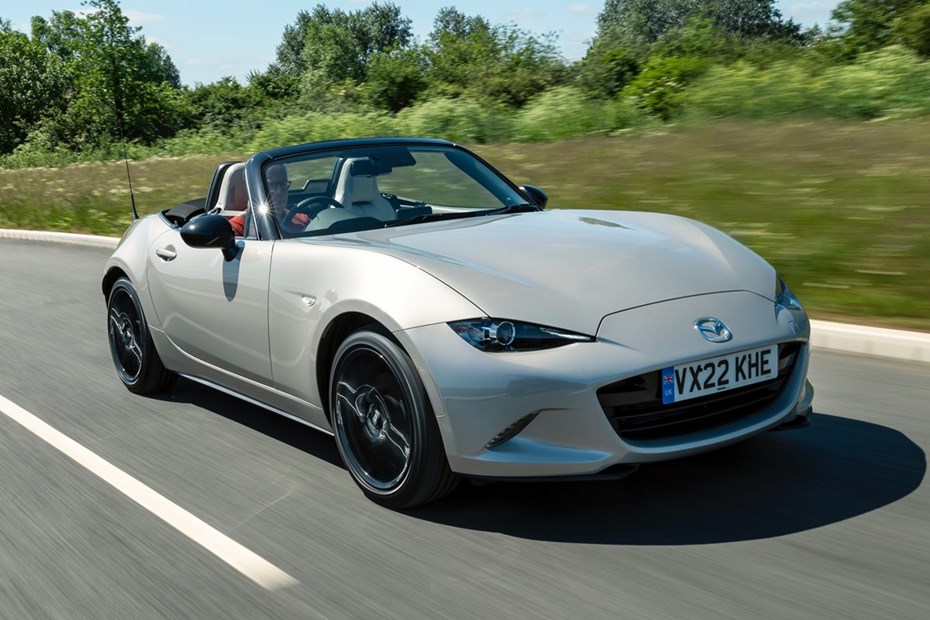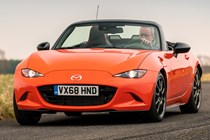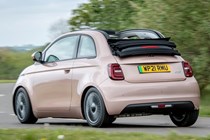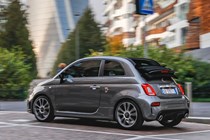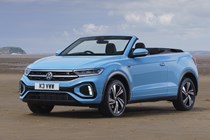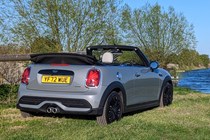We’re incredibly fond of convertible cars in the UK. Along with the Germans, we buy more than any other nation in Europe – which makes perfect sense. If you live in Spain or Italy, gorgeous weather is an everyday occurrence. But the sun is far more fleeting in Blighty so, when it does rear its head, we want to make the most of every ray.
This list contains the most affordable convertible cars that we’d recommend. Truly cheap convertibles are few and far between (not many manufacturers persist in hacking the rooves off their mid-sized hatchbacks these days) – but the cars we have included represent excellent value.
You don’t sacrifice much in the way comfort and refinement by opting for a convertible car, either. The best modern convertibles have multi-layer soft tops to help keep wind noise to a minimum – so, even though the hard-top convertible has pretty much died out, we don’t miss it. Scroll down to read our full list of the best cheap convertibles to buy in 2024.
The best cheap convertibles to buy in 2024
A sports car icon – and everything we want from a small convertible
You can choose from two engines. The entry-level 1.5-litre model is a little gutless, but it’s happy to be worked hard. The 2.0-litre is far brawnier, but it’s still outpaced by the best hot hatchbacks on the market. Still, straight-line speed was never the MX-5’s forte. It’s a focused driving machine that’s better suited to carving along a twisty road.
Read our full Mazda MX-5 review
Pros
- Brilliant fun to drive
- Roof raises or lowers in seconds
- Surprisingly fuel efficient
Cons
- Tiny cabin and boot
- Quick rather than fast
Fiat’s fashion-first city slicker, made more fun with a drop-top
That means the 500 Electric Convertible drives almost identically to the standard 500 Electric, which is no bad thing. It’s fast in a straight line, fun on your favourite B-road and comfy on the motorway. Just remember to plan your charging stops if you to take it outside the city. Fiat says it can go 200 miles – but that tumbles to around 140 miles during extended periods of high-speed driving.
Read our full Fiat 500 Electric Convertible review
Pros
- Quiet, roof up or down
- Strong performance
- Genuinely small
Cons
- Range tumbles on motorway
- Rear seats are decorative
It’s a hooligan – and the folding roof means you can hear it better
The result? A hot hatch that’s surprisingly quick in a straight line but compromised in most other areas. A Hyundai i20N, for example, will monster it in the corners, while its sit-up-and-beg driving position and bouncy suspension means it isn’t very comfortable on the motorway. But owners don’t care. They love the Abarth’s obnoxious exhaust and puppy-like charm. And we can help but agree. Plus, because the car’s been around for more than a decade, there’s a healthy stock of (far cheaper) used cars to pick through.
Read our full Abarth 595 review
Pros
- Fast and juvenile
- Hilarious exhaust note
- Affordable running costs
Cons
- Small boot and rear seats
- Compromised driving position
Surprisingly, VW’s mid-sized SUV works well as a convertible
However, the T-Roc was never designed to have a convertible roof, so you sacrifice some of the standard car’s structural rigidity for the extra style – and you can feel that difference in the corners. But that’s not such a huge concern, because it isn’t a sports car. It’s all about comfort and ease of use. It’s at its best when paired with Volkswagen 1.5-litre petrol engine and automatic gearbox. Plus, it’s quite spacious inside, with a usable rear seat and big boot.
Read our full Volkswagen T-Roc Cabriolet review
Pros
- Spacious interior for a convertible
- Straightforward cabin controls
- Well-equipped as standard
Cons
- Handling is a bit wobbly
- Reduced engine range
All the MINI values, in a drop-top package
But there are plenty of upsides, too. The handling may be compromised but it’s still sharper than most hatchbacks, with direct steering, strong grip levels and a general feeling of fun. The interior’s well-built and straightforward, too.
Read our full MINI Convertible review
Pros
- Proper convertible roof
- Range of nippy engines
- Upmarket interior
Cons
- Hatch handles better
- Useless rear seats
Caterham 7 170
Probably the most fun you can have on four wheels
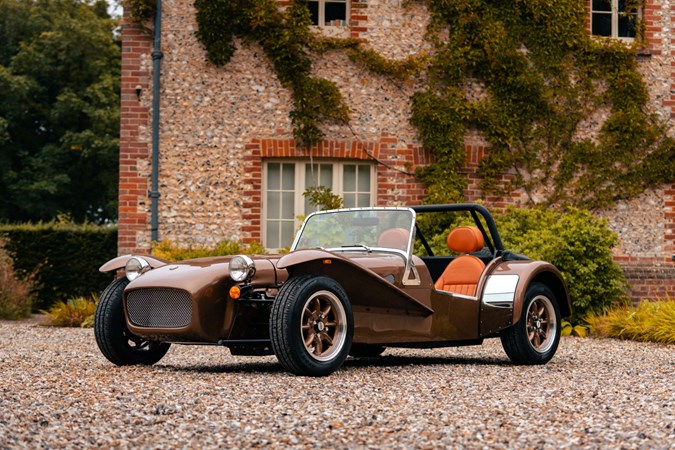

It’s best on a B-road, though, where you can enjoy driving in its purest form. No nannying electric aids – just you, four tyres and a Momo steering wheel. It makes hot hatchbacks like the Ford Fiesta ST feel like limousines and makes a MINI Convertible feel gigantic – and that’s just what Caterham drivers love. You can even opt to build the 7 yourself, although having it pre-built from the factory isn’t too expensive. Prices for a factory-finished car start from a shade over £32,000.
Read our full Caterham Super Seven review
Pros
- Telepathic handling characteristics
- Dinky engine is very approachable
- Endlessly customisable
Cons
- You’ll have to be skinny
- … and not mind getting wet
Convertible car buying guide
What are the disadvantages of convertible cars?
That all depends on what sort of person you are. If you like to make the most of every ray of sunshine Britain gets, then you’ll probably struggle to see the disadvantages of owning a convertible. However, if you value comfort, refinement and practicality above all else, you might find a convertible’s increased wind noise, more flexible body and smaller cabin frustrating.
Which is the cheapest convertible?
The cheapest new convertible you can buy today is the Fiat 500C. Prices start from just £19,440. It isn’t a particularly exciting car, but it’s stylish and efficient thanks to its 1.0-litre mild hybrid petrol engine which Fiat says can return up to 60mpg. It shares the same convertible roof layout as the Abarth 595C, with fixed pillars and a full-length fabric sunroof.
Are convertibles slower with the top down?
Fractionally, but you’ll struggle to feel the difference. Having the roof retracted will increase the amount of drag acting on a convertible car, which will reduce its top speed. But the affordable convertibles in this list aren’t fast enough for that to be a concern – and having the roof down won’t dramatically affect any of these car’s ability to travel at motorway speeds.
Should I get a soft top or hard top convertible?
Hard-top convertibles are few and far between these days – and most of those that remain (such as the Ferrari 296 GTS) are ruinously expensive. The only reasonably affordable tin-top convertible on sale now is the Mazda MX-5 RF – but we wouldn’t choose it over the soft-top model because it isn’t as good to drive thanks to the heavy roof mechanism.
Do convertible cars hold their value?
Convertible cars are unusual because their value fluctuates with the seasons. They tend to experience a slight increase in value during spring and summer (when drivers are most able to enjoy them), before dipping in price as the colder months arrive. So, if you’re selling a convertible, wait until after April to get the best price. If you’re buying one, make sure you close the deal in winter to reap the biggest savings.
Should I get a soft top or hard top convertible?
Hard-top convertibles are few and far between these days – and most of those that remain (such as the Ferrari 296 GTS) are ruinously expensive. The only reasonably affordable tin-top convertible on sale now is the Mazda MX-5 RF – but we wouldn’t choose it over the soft-top model because it isn’t as good to drive thanks to the heavy roof mechanism.
Are convertible cars safe?
Convertible cars are made using less metal, which means they’re not as safe as a hard top in a crash – especially if you’re unfortunate enough to roll the car. However, manufacturers are doing their best to engineer their way around the issue. The MX-5, for example, will gain a suite of additional safety equipment in 2024, including lane-keeping assist and a traffic sign recognition system. Plus, it scored an impressive four stars in its original Euro NCAP crash test, back in 2015. If you’re particularly concerned about safety, you can always opt for a car such as the Fiat 500 Electric Convertible, which has metal pillars from the front to the rear, making it stronger in an accident.
Are there any electric convertible cars?
Electric convertible cars are few and far between, especially at the affordable end of the market. However, MG will soon shake up the scene with the Cyberster Roadster. It’ll hit the UK market in summer 2024, sporting a 314hp electric motor and a claimed maximum range of 330 miles. It won’t be what you call cheap (prices will start from around £50,000), but it’ll be more affordable than its rivals from BMW, Porsche and Mercedes.
Luke Wilkinson is a Deputy Editor of Parkers. He specialises in car reviews, news and consumer advice, writing for both Parkers and CAR. He also has a personal interest in classic cars.



